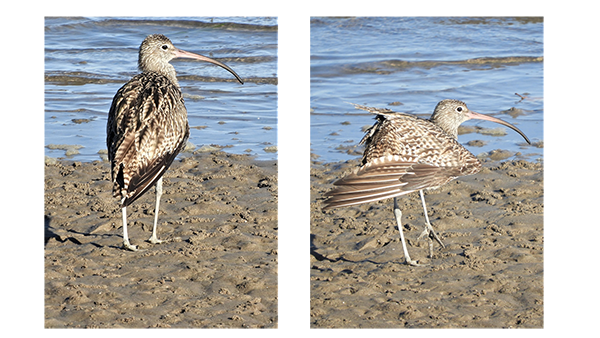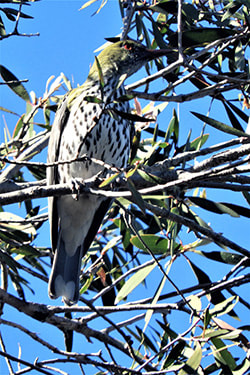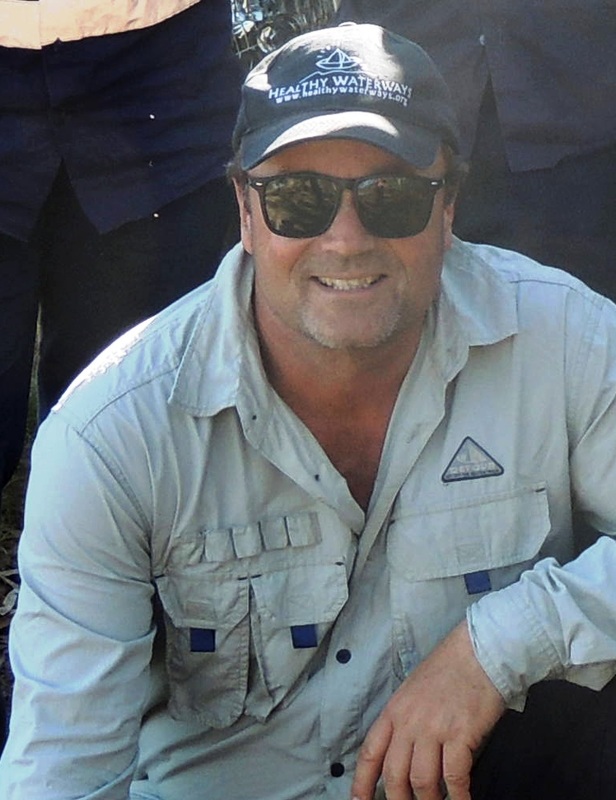Two features make it quite a distinctive tree, the red bell-shaped flower and its root system which is comprised of a series of knees protruding from the substrate surrounding a buttressed trunk. The knee roots are an adaptation to the low oxygen content in the substrate. Providing a similar function to the pneumatophores of the Grey Mangrove (those peg roots associated with the mangrove stands of Moreton Bay). Numerous small holes in the bark of these specialised roots allows for gaseous exchange between the root surface and the atmosphere with oxygen transported to the root system below.
Orange mangroves have large glossy leaves up to 20 cm in width and can flower throughout the year. They produce large floating seeds or propagules, which aid in marine dispersal. They are green and cigar shaped, often up to 25 cm in length. The propagule is viviparous meaning there is a live seedling (already germinated) with a package of nutrients to give the plant a head start once they settle in a suitable area.
The rough bark is cracked and often there are buttress roots supporting the tree within the soft substrate. Orange mangroves are not too common in Moreton Bay and are generally located within the landward zone of sheltered costal areas of Moreton Bay. Also proficient at the Northern end of Russell Island you can find occasional orange mangroves amongst the dominant grey mangroves at Hays Inlet and Deception Bay. Although limited within Moreton Bay, they are widely distributed through Northern Queensland and the tropical coastlines of Indonesia.
Although, it was disappointing to have the Mangrove Festival cancelled on the day, Coochiemudlo Island is certainly a place to go and visit, enjoy the scenery, the wildlife and the distinctive mangrove coastal areas, including the Orange Mangrove.
Further Reading:
The Mangroves of Moreton Bay by RM Dowling (Queensland Botany Bulletin Number 6, 1986)
Australia's mangroves: the authoritative guide to Australia's mangrove plants by Norm Duke and Diana Kleine (2006)
Wild Guide to Moreton Bay and adjacent coasts edited by Peter Davies and published by the Queensland Museum (Volumes 1 and 2, 2011)




 RSS Feed
RSS Feed
